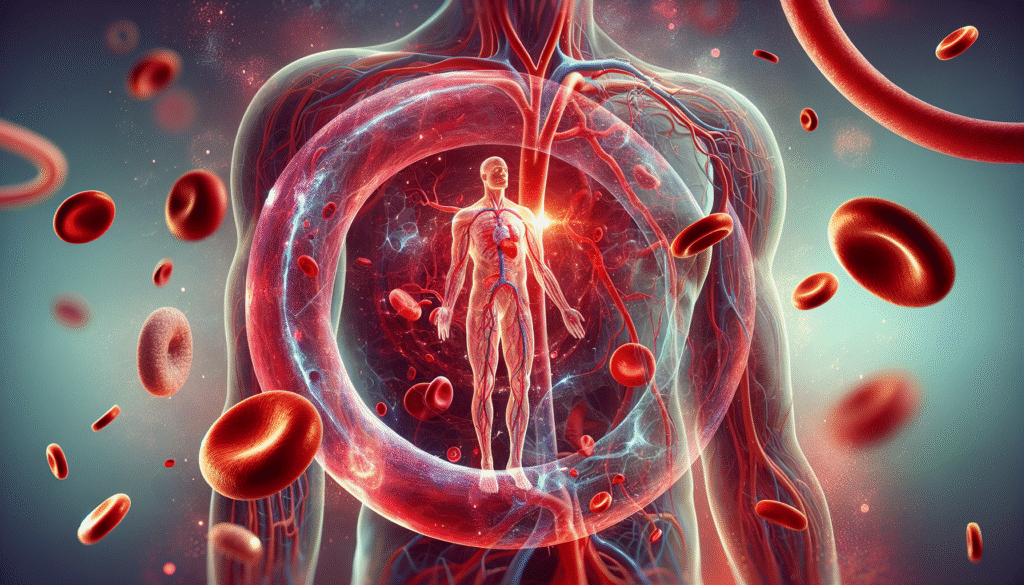What do you think happens in your body when you exercise, and then the moment you stop moving? You might be surprised to learn that the science behind blood flow, vasoconstriction, and recovery plays a crucial role during those moments. Understanding these concepts can help you optimize not just your workouts but also your overall health. So let’s take a closer look.
Understanding Blood Flow
Blood flow is essentially how blood travels through your body, and it’s vital for delivering oxygen and nutrients to your cells. When you think about it, your heart is like a pump, circulating blood through a complex network of arteries, veins, and capillaries.
The Importance of Blood Flow
Having efficient blood flow is not just about physical performance; it also affects your recovery and wellness. When blood circulates well, it helps your muscles receive oxygen, leading to better performance and quicker recovery after workouts. It’s like giving your body the fuel it needs to bounce back stronger.
How is Blood Flow Regulated?
Blood flow is regulated by a combination of heart rate, blood vessel diameter, and blood viscosity. Your body adapts to various conditions through mechanisms that allow vasodilation and vasoconstriction (more on that soon). Understanding how these factors come into play can empower you to make better choices regarding your physical activities.
The Role of Vasoconstriction
Now let’s shift gears and talk about vasoconstriction. This term refers to the narrowing of your blood vessels, which can affect how blood flows through your body.
What Triggers Vasoconstriction?
Vasoconstriction typically happens in response to certain physiological signals. For instance, when you are cold, your blood vessels narrow to conserve heat. Likewise, during stress or certain emotional reactions, your body may trigger vasoconstriction to prioritize blood flow to vital organs. This is your body’s way of ensuring it efficiently deals with stressors.
The Effects of Vasoconstriction on Blood Flow
When vasoconstriction occurs, the blood flow to particular areas decreases. This not only affects how effectively your muscles can function during workouts but also how they recover afterward. Intense vasoconstriction can lead to fatigue, cramping, or even delayed recovery when you’ve pushed yourself hard.
| Condition | Effect on Blood Flow |
|---|---|
| Vasodilation (widening) | Increased blood flow, better nutrient delivery |
| Vasoconstriction (narrowing) | Decreased blood flow, reduced oxygen and nutrient supply |

The Science of Recovery
Recovery is more than just resting; it’s an active process where your body repairs itself after exercise. Understanding how blood flow and vasoconstriction influence recovery can set you on the path to better physical health.
How Blood Flow Affects Recovery
After you exercise, your body needs to repair muscle tissues, replenish energy stores, and clear out metabolic waste. Blood flow is essential in this phase, as it carries the necessary nutrients and oxygen to the muscles while removing carbon dioxide and lactic acid.
Optimal Recovery Strategies
You may find it interesting that timing and methods you choose for recovery can significantly influence how quickly you bounce back. Techniques such as active recovery (think light walking or gentle stretching) can enhance blood flow. This improved circulation leads to faster recovery times.
The Connection Between Vasoconstriction and Recovery
As you recover, your body needs to balance between vasodilation and vasoconstriction. While you want to narrow blood vessels for certain benefits, like reducing swelling after an injury, ensuring that blood can flow freely to other areas is just as important.
Understanding Post-Exercise Blood Flow
After exercise, vasodilation takes precedence. Your muscles need more blood, not less. Whether you’re taking a cold shower, using ice packs, or doing a cool-down routine, you inadvertently manipulate blood flow and may enter a state of vasoconstriction in certain areas, while facilitating vasodilation elsewhere.

The Impact of Nutrition on Blood Flow and Recovery
What you eat can play a significant role in blood flow and recovery. Let’s break this down.
Foods That Promote Blood Flow
Certain foods can help optimize your blood circulation. Here are a few examples you might consider incorporating into your diet:
| Food | Benefits |
|---|---|
| Beets | High in nitrates which boost circulation |
| Berries | Antioxidants improve blood vessel health |
| Fatty fish | Omega-3 fatty acids reduce inflammation |
| Dark chocolate | Contains flavonoids that promote vasodilation |
Hydration Matters
You might not think about it, but hydration is crucial for maintaining healthy blood flow. When you’re dehydrated, your blood volume decreases, leading to increased viscosity. This can make your heart work harder and slow down circulation. So, drinking enough water is essential, especially during and after workouts.
The Role of Exercise in Blood Flow Regulation
It’s not just your nutrition that influences blood flow; regular physical activity has a profound impact too.
How Exercise Enhances Blood Flow
When you exercise, your heart rate increases, and your blood vessels dilate, leading to improved circulation. This is particularly beneficial because it allows your muscles to receive the oxygen and nutrients needed for optimal performance. Side note: that’s why warm-ups are essential—the gradual increase in blood flow prepares your muscles for the work ahead.
Types of Exercises for Optimal Blood Flow
Different types of exercises affect blood flow in unique ways. For example, cardiovascular workouts promote overall circulation, while strength training can lead to localized blood flow improvements. Here’s a quick overview:
| Exercise Type | Effect on Blood Flow |
|---|---|
| Cardiovascular (running, cycling) | Increases overall circulation |
| Strength training (weights) | Enhances localized blood flow |
| Flexibility and stretching | Promotes blood flow to muscles |

Managing Vasoconstriction in Daily Life
Sometimes, you might notice that certain activities or situations lead to vasoconstriction. It’s essential to manage this effectively.
Techniques to Manage Vasoconstriction
Certain practices can help your body maintain optimal blood flow and counteract unnecessary vasoconstriction:
- Breath Control: Deep, controlled breathing can help relax your blood vessels.
- Warm Therapy: Warm showers or heating pads can encourage vasodilation and improve circulation.
- Physical Activity: Simple movements throughout your day can stimulate blood flow.
Recognizing Symptoms of Poor Circulation
If you’re experiencing symptoms like cold extremities, numbness, or prolonged muscle soreness, these could indicate poor circulation due to vasoconstriction. Listening to your body and adjusting your lifestyle can make a significant difference.
The Physiological Response to Stress
Stress is unavoidable in life; what matters is how your body responds. Stress often triggers vasoconstriction, sending blood away from your extremities and toward your vital organs.
Managing Stress for Better Recovery
Finding ways to manage stress not only benefits your mental health, but it can also improve your physical well-being by promoting better blood flow. Techniques like yoga, mindfulness, and even simple breathing exercises can go a long way.
The Effects of Chronic Stress on Blood Flow
Chronic stress can lead to persistent vasoconstriction, which may result in various health problems over time. This highlights the importance of finding effective stress management strategies that work for you.

Recovery Timing and Techniques
Getting your timing right for recovery can significantly influence outcomes. Waiting too long after your workout might hinder recovery; however, jumping back in too quickly can lead to injury.
The Best Practices Post-Workout
Here are some tips to optimize your recovery time and blood flow:
- Cool Down: Spend about 5 to 10 minutes engaging in light exercise after your main workout to facilitate blood flow without overexertion.
- Stretching: Gentle stretches can improve flexibility while promoting vascular health.
- Nutrition: Consume an optimal combination of protein and carbohydrates within 30 minutes post-exercise to kickstart muscle repair.
Conclusion
So, what’s the takeaway here? Understanding the dynamics of blood flow, vasoconstriction, and recovery can empower you to take control of your health and fitness. By being mindful of how you eat, exercise, and manage stress, you’ll not only enhance your performance but also improve your recovery time. Isn’t it fascinating how interconnected these various aspects of our physical well-being are? By making small, informed changes in your lifestyle, you’ll be well on your way to feeling better both during and after your workouts.


